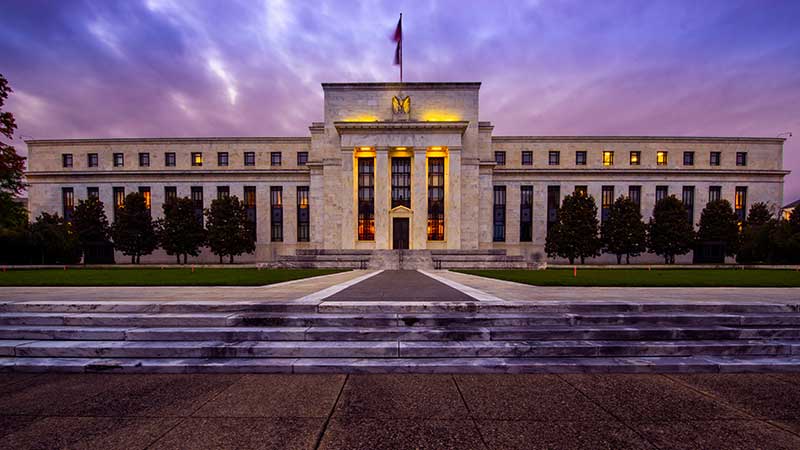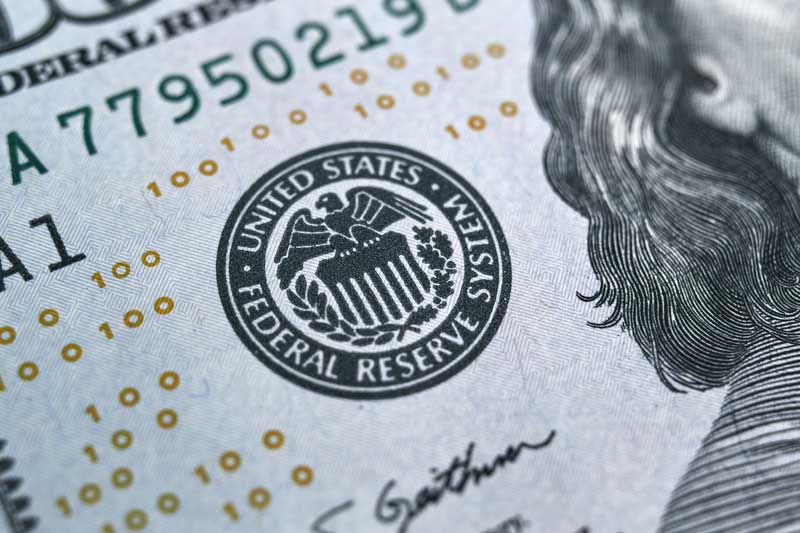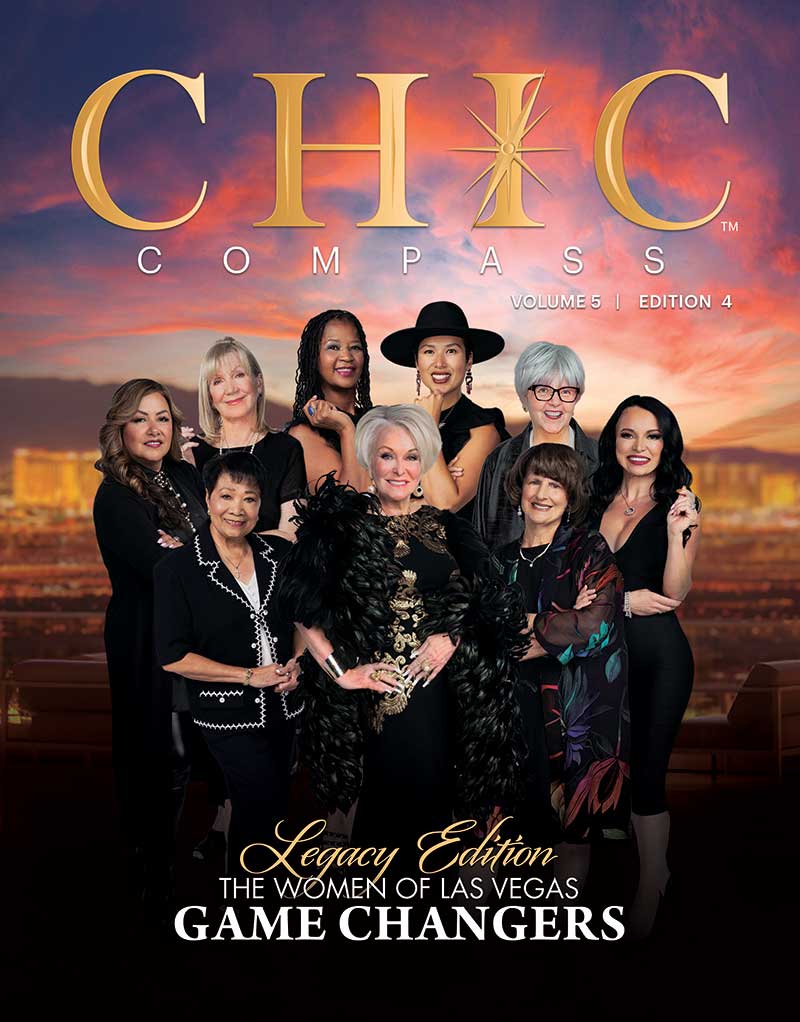
Is the U.S. Federal Reserve System Working, or Should It Face Extinction?
BY JOSEPH AMATO
The U.S. Central Bank, commonly known as the Federal Reserve Bank, has origins extending back to 1791 when the U.S. Congress chartered The First Bank of the United States. It was the country’s first attempt at a central bank. But in 1811, the charter for the First Bank was not renewed.
In 1816, The Second Bank of the United States was established. It faced many of the same challenges as The First Bank, including concerns over its power and influence over a fragile U.S. economy. In 1836, the charter for the Second Bank was not renewed, and the U.S. went without a central bank for nearly 80 years. But in 1913, after several difficult financial episodes that faced the country, the Federal Reserve Act was passed, establishing the Federal Reserve System, commonly known as the Fed. The Fed has been in control of the U.S. financial markets ever since, but 110 years later, is it still the correct master of our economic system, or is it due a reset?
The Fed has many distinct responsibilities, none more important than the other.
The Federal Open Market Committee (FOMC) meets regularly to set monetary policy, including setting the federal funds rate, which influences interest rates throughout the economy. Decisions here can impact borrowing costs, consumer spending, and business investments.
The Fed also plays a key role in supervising and regulating the banking industry. The Fed can implement policies that enforce stricter bank regulations or, to a lesser extent, more relaxed banking rules, thereby affecting our financial system’s overall health and stability.
In 2008, the Fed began the process of Quantitative Easing in response to the 2008 financial crisis. With this practice, the Fed purchased long-term securities to lower interest rates and increase money supply. This policy was controversial because it was firmly believed that recklessly increasing the money supply would eventually lead to inflation, possibly creating an asset bubble in real estate, stocks, and bonds and reducing the interest rate income for the ordinary “saver.” It would create a dependency among the financial markets as they became too reliant on central bank intervention. Most concerning was the fact that there was no clear or concise exit strategy, and this in itself could lead to a financial market catastrophe.
As of 2023, we are facing a U.S. economy dealing with many negative ramifications influenced by the Fed’s actions over the last fifteen years alone.
The Fed’s long-term mandate has always been to promote maximum employment, curb inflation, and provide a solid platform for stable prices. Its decisions in achieving these objectives and how it reacts to rising inflation can have broad implications for the economy, affecting voters’ sentiments and choices in future elections.

While the Fed plays a significant role in influencing the U.S. economy, other factors, including global events, technological changes, and legislative decisions, can also have a substantial impact.
The central banking philosophy is not exclusive to the U.S and can be traced back to the late 1600s. The Bank of Sweden (1668) and the Bank of England (1694) were among the first to establish a central bank to assist in developing a distinct monetary system. They were established respectively to provide funding to their respective national governments.
Additionally, during the 19th century, many countries around the world used their central banks to adopt the gold standard, which tied the value of their currency to a specific amount of gold. Central banks also played a major role in maintaining this standard until 1971.
The role of central banks evolved mainly in the U.S. and Europe, especially after the Great Depression in the 1930s, and began to take on responsibilities related to monetary stability and bank supervision.
Their importance grew significantly post-WWII as central banks like the Federal Reserve in the U.S. played a crucial role in rebuilding economies. In 1944, The Bretton Woods Agreement established fixed exchange rates that subsequently led to the creation of the International Monetary Fund (IMF) and the World Bank.
Whether the Fed should continue today or be abolished is extremely complex and depends on one’s perspective.
Most individuals who argue in favor of the Fed will often identify its power to play a crucial role in maintaining economic stability by setting monetary policy, adjusting interest rates, and controlling inflation. The Fed is also considered the lender of last resort as it provides emergency funds to troubled banks during times of financial crisis, hopefully preventing bank runs and creating a broader economic collapse. They believe having a central bank allows a quick and flexible response to economic changes and challenges. In addition, the Fed plays a vital role in regulating and supervising banks, ensuring they operate safely and soundly. Finally, the Fed conducts significant economic research and provides critical economic data that helps policymakers and the public understand the state of the economy. That is if you trust the information we are given.
Arguments in favor of abolishing the Fed are based on a lack of true transparency in a 24-hour news cycle where it is believed that the Fed operates with too much secrecy and insufficient oversight from elected officials. Some believe that the Fed’s actions, such as quantitative easing, lead to harmful long-term economic effects, like the current asset bubble and out-of-control long-term inflation. In the last few years, the government has been perceived to be the problem and not the solution, and critics argue that having so much power centralized in one institution can be dangerous, especially if decisions are made that benefit certain financial institutions or industries at the expense of others. The common practice of picking winners and losers in the marketplace has become more than evident lately, and the Fed has its fingerprints in many areas of concern. And finally, there’s a concern that banks and financial institutions are taking unnecessary risks and blurring the lines of honest banking, believing that the new Fed mantra is to bail them out if things go wrong. Too big to fail is no longer a mere concern; it appears to have become an entrenched Fed Policy.
But replacing the Fed would not be an easy task and would probably be as complicated as insisting on establishing Congressional term limits. There would be many profound economic, political, and social considerations in taking on the task of eliminating the Fed.
Some ideas and options that can be considered as reasonable alternatives involve re-establishing the value of a country’s currency to the gold standard. The gold standard was established before the creation of central banks in many countries.
We may also consider establishing a system where banks issue their own currency backed by commodities like gold or silver. The market would determine the currency’s value, removing any central monetary authority. There is a school of thought that decentralized digital currencies like Bitcoin could replace the need for a central bank. Many believe the decentralized nature and fixed supply of specific cryptocurrencies can prevent issues like hyperinflation. Many security and oversight problems in the existing cryptocurrency markets need to be addressed before this option can be considered.
There is also the idea of replacing the Fed with its sole responsibility of setting interest rates and conducting open market operations, with a fixed rule that could guide monetary policy automatically. Specific guidelines for adjusting interest rates could be predetermined by setting up thresholds for inflation and employment actual and potential GDP targets.
The state could implement full-reserve banking whereby banks would be required to hold reserves equal to 100% of their customers’ deposits, thereby eliminating any future bailouts. It could also limit the ability of banks to extend credit for business and personal usage. Instead of a single central bank, a network of public banks at the local, state, and national levels could be established in the marketplace. These banks would operate with public welfare as the primary goal rather than profit.
Many other alternate ideas support replacing the Fed, including aligning our currency market to a group of commodities rather than a single one like gold. They also seek to abolish legal tender laws and allow private institutions to issue their currencies. Over time, the most reliable and stable currencies would presumably be the most widely adopted by the public. That is very much in line with what cryptocurrency has done to take a foothold in the U.S. financial market.
Proposals by some U.S. economists involve replacing a large portion of the current tax structure with a tax on unimproved land values and using public credit rather than relying on private banks for money creation.
Finally, instead of targeting inflation or interest rates as the key indicator for economic decisions, a proposed monetary authority, replacing the Fed, would target the nominal GDP, ensuring that the economy grows at a steady rate.
It’s important to note that each of these proposals has its own advantages, disadvantages, challenges, and trade-offs. Any move to replace or significantly reform the current central banking system would need careful consideration, rigorous analysis, and broad consensus.
In conclusion, whether the Fed should continue or be abolished depends on one’s view of its effectiveness. The current Fed’s economic role and influence on financial markets appear to need some level of overhaul and much-needed transparency of what truly goes on behind the curtain. How that will transpire is still up for intense discussion. The debate is multi-faceted, and there are no specific answers, but as the world constantly changes, so should the way we control the most critical aspects of our economy.


